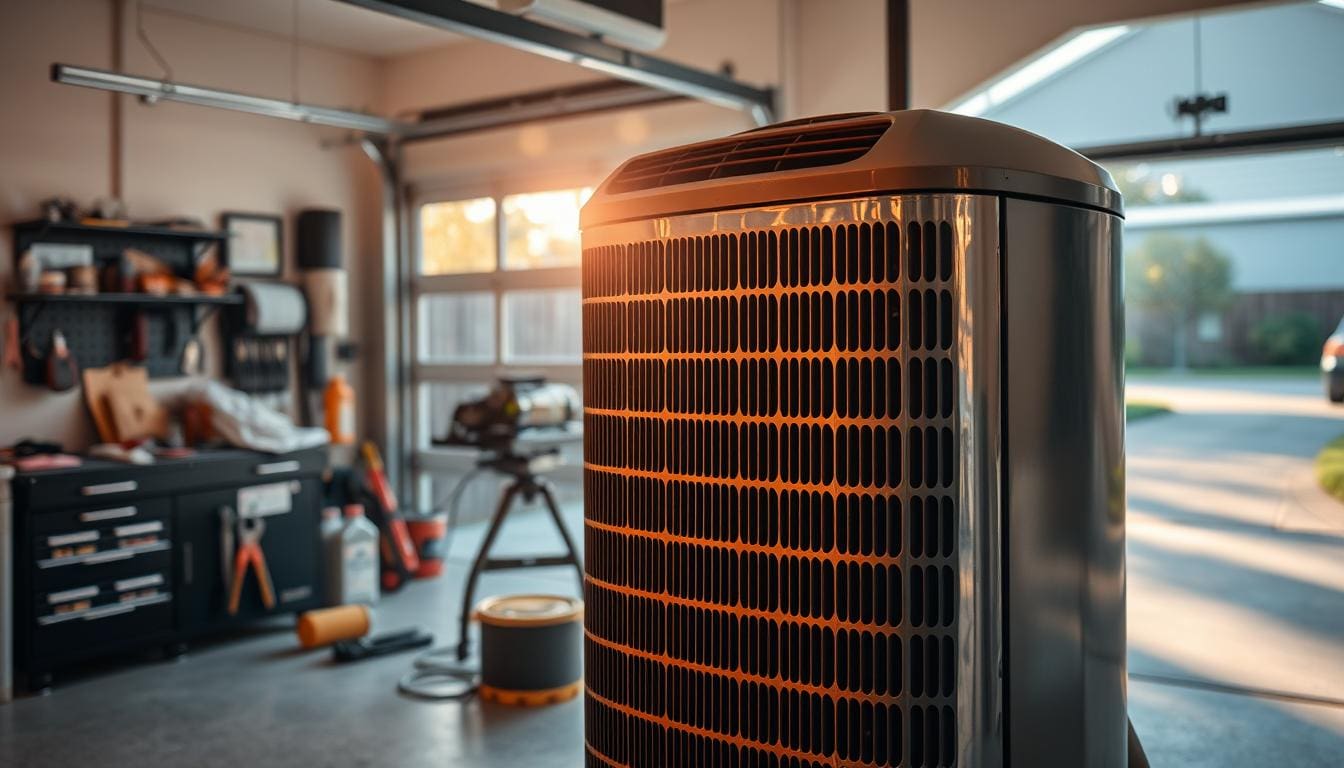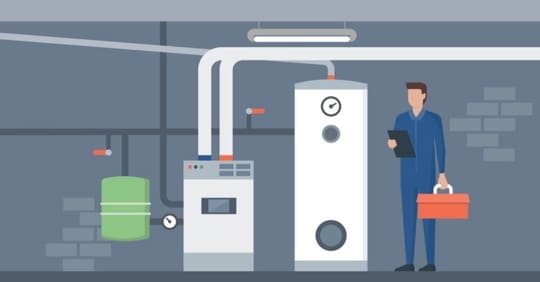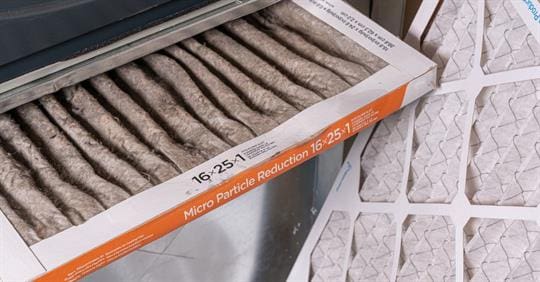Ever found yourself rushing to the basement on a cold morning to check the heating tank? The worry of heating oil delivery and whether you’ll run out is common. It’s stressful, trying to schedule it while at work.
Dupuis Energy has been keeping families warm for over 125 years. Residential fuel oil delivery has made this process easy. Automated monitoring takes away the guesswork, and prices are competitive. You’ll never have to worry about a cold house again.
Today’s solutions are a big change from the old ways. Automatic programs save you hours, budget plans keep costs steady, and scheduling is easy. It works for everyone, whether you manage many properties or just want more family time.
Key Takeaways
- Automated delivery systems eliminate the need for constant tank monitoring and manual ordering
- Budget payment programs help spread heating costs evenly throughout the year
- Reliable scheduling prevents costly heating interruptions during cold weather
- Volume pricing and loyalty programs reduce overall fuel expenses
- Convenient service benefits busy families, seniors, and property managers equally
- Over 125 years of industry experience ensures dependable, professional care
1. What Makes Home Oil Delivery Service Different from Traditional Fuel Ordering
Keeping your home warm depends a lot on how you order heating oil. The residential fuel oil industry has two main service models. Knowing these can help you pick the best one for your lifestyle and reduce stress during the heating season.
The way we get heating oil has changed a lot over the years. Today, homeowners have more options than ever to manage their fuel supply.
The Traditional Approach: Managing Your Own Fuel Supply
Will-call delivery means you’re in charge. You need to check your tank gauge often. When it’s about a quarter full, you call your supplier for a delivery.
This method keeps you on your toes. You must remember to check the gauge, which is harder during cold weather when you use more oil.
For busy families, will-call delivery can be tough. You have to call during business hours, which might interrupt your day. The delivery time can be uncertain, making it hard to plan your day.
Many people worry about ordering at the right time. If you order too early, you might not have room for a full tank. Waiting too long can leave you without oil on weekends or holidays, when prices are higher.
Keeping track of deliveries and receipts can be a hassle. It adds to the stress of managing a busy household.
How Modern Technology Changes Everything
Automatic delivery programs change the game. We handle the monitoring and scheduling for you. This modern way uses your past usage and weather to predict when you’ll need more oil.
The system looks at degree days in your area and your home’s usage. This lets us schedule deliveries before you run out.
You don’t have to check your tank or make calls. The technology works quietly, making sure you always have oil. This saves you from worrying about fuel.
Automatic delivery gives you predictable, proactive service that fits your home’s needs. It adjusts for vacations or cold snaps. This means you’re always prepared.
This service offers more than just convenience. It also protects you from running out unexpectedly. This can save you money and prevent damage to your heating system.
| Service Feature | Will-Call Delivery | Automatic Delivery Programs |
|---|---|---|
| Monitoring Responsibility | Customer checks tank levels regularly | Supplier monitors using data and technology |
| Ordering Process | Customer calls to request delivery | Deliveries scheduled automatically by supplier |
| Risk of Running Out | Higher if customer forgets or miscalculates | Minimal due to predictive scheduling |
| Time Investment | Ongoing monitoring and phone calls required | Zero time required from customer |
| Best For | Homeowners who prefer complete control | Busy households valuing convenience and reliability |
The main difference is who takes care of keeping your home warm. Will-call delivery needs you to be active and watchful. Automatic delivery programs do it all for you, using advanced tools for reliable service.
This choice is more important than many think. It saves you time, reduces stress, and protects you from expensive problems. We’ll look closer at how automatic delivery works and how it can save you money and time.
2. How Automated Heating Oil Delivery Works
Automated heating oil delivery is a smart way to keep your home warm. It uses data and calculations to know when to refill your tank. This technology has improved over time, making it more accurate than ever.
This system works quietly in the background. You don’t have to check your tank or call anyone. It ensures fuel arrives on time, based on how much you use and the weather.
Weather-Based Fuel Consumption Tracking
Degree day systems are at the heart of automatic oil delivery. They track outdoor temperatures to predict heating needs. Each degree below 65°F means more heating for your home.
Let’s say it’s 45°F outside. That’s 20 degree days. Suppliers compare this to your past fuel use. This helps them figure out how much fuel you’ll need per degree day.
The system gets better with each delivery. After a winter, suppliers know how much fuel your home uses. A well-insulated home might use 6-7 gallons per degree day. An older home might use 10-12 gallons.
Cold weather means faster delivery. When it gets really cold, the system moves your delivery date up. This prevents fuel shortages during cold snaps.
Real-Time Tank Level Monitoring
Smart tank monitoring is the latest in heating oil tech. Devices on your tank give exact fuel levels. This means no guessing games.
These devices use sensors to measure fuel levels. They send data to your supplier, updating several times a day. You can see your fuel status anytime, through apps or online portals.
These systems offer big advantages:
- Precision accuracy – You always know your tank level, not just an estimate
- Unusual consumption detection – Alerts for leaks or equipment issues
- Remote access – Check your tank from anywhere with a smartphone app
- Multiple property management – Manage several locations from one place
Not all systems need physical monitors. Some use degree day calculations and delivery history. But, monitors offer the most precise control and visibility.
Intelligent Delivery Planning
Predictive scheduling makes deliveries efficient. Suppliers plan routes and timing based on your needs and weather. They usually refill when tanks are 25-30% full.
Weather forecasts are key in planning deliveries. If a cold front is coming, your delivery might be moved up. This ensures you have enough fuel when you need it most.
Logistics also play a part. Suppliers plan routes to serve many customers at once. This saves costs and gives you savings.
Here’s what goes into each delivery decision:
- Current tank levels (measured or calculated)
- Recent fuel consumption rates based on weather patterns
- Extended weather forecasts for your area
- Current delivery route efficiency and scheduling
This approach makes deliveries very reliable. Automated systems have success rates over 99% in preventing empty tanks. They use data and analytics to plan your delivery perfectly.
The technology removes uncertainty from home heating. You can trust that automated systems are always planning your next delivery. This peace of mind is a big benefit of modern heating oil technology.
3. Five Ways Residential Fuel Oil Delivery Saves You Time
The time-saving benefits of automatic oil delivery change how we manage our homes. Traditional ordering takes up a lot of time. It involves constant checks, scheduling, and paperwork.
Switching to automated service frees up time for more important things. Thousands of homeowners have seen this change. They no longer worry about fuel management.
No More Constant Tank Level Checking
With traditional delivery, checking the oil tank is a must. Homeowners often check it weekly in winter. This involves finding a flashlight, reading the gauge, and guessing how long the fuel will last.
This task may only take a few minutes. But it keeps you worried. You have to remember to check it regularly and understand the readings.
Many homeowners worry about running out of oil. This worry is worse during cold weather when they use more fuel.
Automatic oil delivery makes this worry go away. Suppliers check the fuel levels for you. You don’t have to check the tank anymore.
Say Goodbye to Scheduling and Phone Calls
Traditional ordering means lots of phone calls. When your tank is low, you call the supplier. This can take 10-15 minutes, including hold times.
During the call, you give your account info and schedule the delivery. This can be hard to fit into your work schedule.
“The most valuable commodity I know of is information.”
Coordinating delivery times can be tricky. Some suppliers need someone to be home. This means you might have to take time off work.
Automated delivery solves this problem. It schedules deliveries based on your usage. You don’t need to make any calls.
Drastically Reduced Administrative Tasks and Recordkeeping
Managing heating oil purchases means a lot of paperwork. With traditional ordering, you need to keep records for warranties and taxes. You also track prices and payments.
This recordkeeping is time-consuming. You need to manage invoices and payments. Many keep spreadsheets for this purpose.
Comparing prices is another task. You need to track market rates and calculate your cost per gallon. This requires a lot of effort.
The time-saving benefits of automatic oil delivery make recordkeeping easier. Most programs provide monthly statements. This simplifies budgeting and bill management.
Many programs also offer online access. You can view your delivery and payment history online. This saves time and makes it easier to manage your account.
Automated delivery saves homeowners 8-12 hours per heating season. This time can be used for family, work, or relaxation. It means your home comfort system works without your constant worry.
4. The Financial Benefits of Automatic Oil Delivery Programs
Many people think convenience services cost more. But automatic delivery programs can actually save you money. Customers who switch to automatic delivery often save between $150 and $400 a year compared to will-call ordering.
These programs offer several ways to lower your heating oil costs. Let’s look at how they provide real financial benefits.
Lower Per-Gallon Pricing Through Volume Commitments
Fuel suppliers like automatic delivery customers because they are predictable and efficient. This efficiency means lower prices for you.
With automatic delivery, we plan better routes and avoid emergency calls. This saves us money, which we pass on to you. Automatic delivery prices are 3 to 8 cents lower per gallon than will-call rates.
This can save a typical household using 800 gallons $24 to $64 a year. For homes in colder climates using 1,200 gallons, the savings are $36 to $96 annually.
Automatic delivery customers get better prices because they help us save money. These savings are passed on to you.
These savings often cover any monthly fees. Many automatic delivery programs don’t charge extra fees. This makes switching cost-neutral or even cost-negative compared to will-call ordering.
Access to Pre-Buy and Price Lock Programs
Automatic delivery customers often get access to price protection programs not available to will-call customers. These programs help you budget and protect you from price changes.
Pre-buy programs let you buy fuel at set prices before winter. If prices rise, you pay the locked-in rate. For an 800-gallon season, this can save you $440.
Cap programs offer another way to manage costs. They set a maximum price while allowing you to benefit from lower prices. You might pay a small premium for this protection, but it’s worth it during uncertain times.
These programs can save hundreds of dollars during price spikes. They’re very helpful during geopolitical events or supply disruptions.
Budget billing programs also help. They spread your annual heating costs into equal monthly payments. This makes budgeting easier and avoids high bills in winter.
Avoiding Premium Charges for Small or Rush Deliveries
Will-call customers often face high charges for small or rush deliveries. Automatic delivery eliminates these costs. These surcharges can add up quickly and surprise many homeowners.
Emergency delivery fees range from $50 to $100 per delivery. Off-hours service can add another $75 to $150. Small orders also come with extra charges, adding $0.15 to $0.25 per gallon.
Automatic delivery avoids these extra costs. It ensures deliveries arrive on time with the right amount of fuel. Even one avoided emergency delivery can pay for several months of automatic service.
The table below shows the cost differences between delivery methods:
| Cost Factor | Will-Call Delivery | Automatic Delivery | Annual Savings |
|---|---|---|---|
| Per-Gallon Price (800 gallons) | $3.25/gallon | $3.19/gallon | $48 |
| Emergency Delivery Fees | $100 (1-2 per year) | $0 | $100-200 |
| Small Order Surcharges | $50 (1-2 per year) | $0 | $50-100 |
| Price Lock Program Access | Limited or unavailable | Full access | $100-400 |
| Total Possible Savings | — | — | $298-748 |
Imagine you’re watching your tank in December and think you have enough fuel. But then, unexpected cold weather hits, and you have guests. Suddenly, you’re facing an empty tank on Christmas Eve.
The emergency delivery costs $3.45 per gallon plus a $125 holiday surcharge for 150 gallons. Your total is $642.50 for fuel that would have cost $478.50 on a scheduled delivery. This single incident costs you $164 in avoidable charges.
Automatic delivery customers never face this problem. The system calculates your usage and schedules deliveries before you run low. You get discounts instead of paying high prices.
The financial benefits go beyond just saving money. You get predictability in your budget, protection from market changes, and avoid stress-related costs like emergency service calls or furnace repairs from running out of fuel.
When you add up the savings, avoid surcharges, and access to price protection programs, automatic delivery is a smart choice. It doesn’t cost extra; it actually saves money while giving you peace of mind.
5. How Oil Tank Refill Service Prevents Costly Heating Interruptions
An empty oil tank can lead to a lot of unexpected expenses. Losing heat is just the start. It also causes mechanical issues and emergency costs that add up quickly. Families often face bills of hundreds or even thousands of dollars when their tanks run dry.
An oil tank refill service that checks your fuel levels can help avoid these costs. It keeps your fuel levels up before problems start. This way, you avoid the chain of complications that come with an empty tank.
The Hidden Costs of Running Out of Heating Oil
When your heating oil runs out, you face immediate financial consequences. The first cost is emergency delivery fees.
Emergency fuel delivery can cost between $100 and $200 extra. This is because suppliers have to send drivers out of their usual routes and schedules to help you.
Your second unexpected cost is system restart services. After your tank runs dry, air gets into the fuel lines. This needs to be removed professionally, costing $100 to $300, depending on your location and system complexity.
The most serious hidden cost is property damage. If your heating system is offline for too long, pipes can freeze and burst. This can cause thousands of dollars in water damage. Your insurance might not cover damage from neglect or running your tank empty.
Here’s a breakdown of costs when heating interruptions happen:
- Emergency fuel delivery surcharge: $100-$200
- Professional system bleeding service: $100-$300
- Possible frozen pipe repairs: $500-$5,000+
- Lost food from refrigerator/freezer: $200-$500
- Temporary lodging if home becomes uninhabitable: $100-$300 per night
These costs far exceed the cost of an automatic delivery program for a whole heating season. Preventing fuel outages through scheduled deliveries is a real financial safeguard.
Preventing System Damage and Repair Bills
Running your oil tank to empty causes mechanical problems. These issues affect your heating system’s performance and lifespan. Understanding these risks shows why heating system protection through timely refills is so important.
When fuel levels drop too low, sediment gets drawn into your fuel lines. This clogs filters, damages pump parts, and restricts fuel flow. Cleaning or replacing these parts can cost between $200 and $600, depending on the damage.
Air getting into your fuel system is another serious issue. It disrupts the fuel-to-air mixture your burner needs for efficient burning. Your system might not start, cycle on and off, or produce too much soot, damaging your heat exchanger.
We recommend keeping fuel levels above one-quarter tank to avoid these problems. An oil tank refill service with automatic scheduling ensures you never get too low.
The most expensive damage is to fuel pumps and burner nozzles. Modern systems use precise components that can’t handle sediment or dry running. Replacing a damaged fuel pump costs $300 to $700, while a new burner can cost over $1,000.
Compare these repair costs to prevention:
| Problem | Repair Cost | Prevention Method | Prevention Cost |
|---|---|---|---|
| Clogged fuel filter | $150-$300 | Automatic delivery | $0 (included in service) |
| Damaged fuel pump | $300-$700 | Maintain adequate fuel levels | $0 (included in service) |
| Burner nozzle replacement | $200-$400 | Regular scheduled refills | $0 (included in service) |
| Complete system bleeding | $100-$300 | Never run tank empty | $0 (included in service) |
Professional oil tank refill service providers with over a century of experience know timely deliveries prevent these failures. The value of avoiding one major repair often justifies an automatic delivery program for many years.
Maintaining Home Comfort During Winter Months
Beyond money, preventing fuel outages keeps your family warm and safe in winter. The impact of heating failures on your quality of life is significant.
No one wants to wake up to a cold house in winter. If your heating stops overnight, your home can drop 20 degrees before you notice. Young children, elderly family members, and anyone with health issues face real health risks from cold exposure.
We’ve helped families deal with heating emergencies on the coldest winter days. The stress, disruption, and worry from these situations are more than just inconvenient. Parents must find alternative places to stay, miss work, and arrange for multiple service providers to fix the heat.
Automatic delivery services eliminate this worry. You get peace of mind knowing your fuel supply is being watched. Your system runs smoothly, no matter how busy you are or how fast the cold weather drains your tank.
Property managers and landlords value this reliability a lot. Keeping heating interruptions at bay protects tenant relationships and prevents emergency calls that disrupt your schedule.
Second homeowners also benefit a lot from automatic delivery programs. If your vacation property is empty in winter, you can’t check the tank or notice heating failures. An oil tank refill service keeps your property warm and safe, even when you’re far away.
This comfort also makes daily routines easier. You don’t have to remember to check your tank gauge, worry during cold snaps, or figure out if you have enough fuel for the weekend. Your heating system works without a hitch, thanks to reliable fuel deliveries that arrive just in time.
6. Who Benefits Most from Switching to Automatic Delivery
We’ve found four main types of customers who get the most out of automatic delivery. While home oil delivery service is good for everyone, some homes find automatic delivery benefits solve big problems. Knowing who these ideal delivery customers are helps you see if this service fits your life.
Each type of customer has its own struggles with traditional fuel ordering. Automatic delivery fixes these problems right away.
Busy Professionals Managing Full Households
Working families and dual-income homes get big benefits from not having to watch the fuel levels. When both parents work full-time, there’s little time for checking the oil tank.
These families rarely have someone home to order fuel. Automatic delivery saves them time, which means more family moments or less stress.
Modern families are always busy. Taking away one task, like checking the oil tank, is a huge relief. Parents say they’re glad they don’t have to worry about running out of heat.
Older Adults and Those with Physical Challenges
Senior citizens and those with health issues face big challenges with traditional fuel monitoring. Checking the tank can be hard or impossible, whether it’s basement stairs, outdoor tanks in winter, or reading gauges.
Automatic delivery gives these homeowners independence and safety. We make sure they never go without heat in cold weather. They don’t have to ask family or neighbors for help.
Seniors on fixed incomes also benefit from budget billing with automatic service. This makes heating costs steady all year, not just in winter.
Adult children far from their parents sleep better knowing their parents’ heat is taken care of. Families say this peace of mind is priceless.
Owners of Seasonal and Remote Properties
Second home and vacation property owners can’t check fuel levels from afar. Yet, keeping the heat on is key to avoid frozen pipes and damage.
Automatic delivery fixes this problem. We keep an eye on and deliver to seasonal properties, even when you’re not there. Our systems adjust for weather and how empty homes use fuel.
Arriving at a cold vacation home is a nightmare. It’s not just uncomfortable; it can cost thousands to fix frozen pipes.
We treat your second home like your main one. You can enjoy it worry-free, knowing it’s always warm.
Real Estate Professionals Managing Multiple Locations
Property managers and landlords with many units find automatic delivery benefits work great for them. Managing fuel for many places is a big job.
Keeping track of fuel levels across many units is a huge task. Automatic delivery takes this off their hands. They can focus on other things, knowing the heat is on.
Automatic delivery has changed how property managers work. They no longer deal with cold apartments or making many delivery calls. Our systems handle it all.
This service also protects them from legal issues. If tenants are cold because of no fuel, landlords could face big problems. Automatic delivery stops these issues before they start.
| Customer Profile | Primary Challenge | Automatic Delivery Solution | Key Advantage |
|---|---|---|---|
| Working Families | No time to monitor tanks or make daytime calls | Eliminates fuel management from household tasks | Reclaim time for family and reduce mental load |
| Senior Citizens | Physical limitations accessing tanks and gauges | Professional monitoring ensures continuous heat | Maintains independence and safety |
| Second Home Owners | Cannot monitor properties from distance | Remote monitoring prevents heating interruptions | Protects property investment year-round |
| Property Managers | Tracking multiple locations creates administrative burden | Scales across entire property portfolio | Ensures tenant comfort without constant oversight |
These profiles show who gets the most from automatic delivery. If you see yourself in these descriptions, switching to automatic service is likely a good choice for you.
We’ve made our programs for these different needs. Whether you’re a busy pro, a senior, a vacation home owner, or a property manager, we get your challenges. We offer solutions that work for you.
7. Finding Reliable Fuel Oil Delivery Near Me
Finding a good heating oil supplier is key to keeping your home warm during cold months. When you search for fuel oil delivery near you, many options pop up. But, picking the right one means looking beyond just the price.
We’ve helped many homeowners choose the right supplier. The difference between a good supplier and a great one can make a big difference. It can mean the difference between a worry-free winter or unexpected heating problems.
Evaluating Local Heating Oil Suppliers
How long a company has been in business is very telling. Companies that have been around for a long time show they are reliable and committed to their customers.
Companies with over 125 years of experience, like those in Rhode Island and Southeastern Massachusetts, are reliable and committed to their local communities. Their long history shows they have weathered tough times and kept their customers happy.
Look for suppliers that offer more than just fuel delivery. Companies that also install, repair, and maintain HVAC systems provide complete comfort solutions. This shows they are dedicated to quality.
Professional certifications are important when choosing a supplier. Being certified by manufacturers and being recognized as elite contractors shows they are experts in their field.
- 24/7 emergency availability for heating system failures and urgent deliveries
- Range of payment options including budget billing and price protection programs
- Equipment service capabilities for furnace and boiler maintenance
- Delivery scheduling flexibility with automatic or will-call options
- Licensed and insured operations protecting your property and investment
The best heating oil suppliers see themselves as partners in home comfort, not just fuel sellers. They keep you informed about delivery schedules, market changes, and equipment needs.
| Evaluation Factor | What to Look For | Why It Matters |
|---|---|---|
| Years in Business | 25+ years serving local community | Demonstrates financial stability and proven reliability during market fluctuations |
| Service Offerings | Fuel delivery plus HVAC service and equipment installation | Comprehensive support eliminates need for multiple contractors |
| Emergency Response | 24/7 availability with rapid response times | Ensures help during system failures regardless of time or day |
| Professional Certifications | Manufacturer partnerships and industry credentials | Indicates technical expertise and commitment to quality standards |
Service Coverage Areas and Delivery Zones
The area a supplier serves affects their service quality and speed. Suppliers with efficient routes in your area provide better service than those at the edge of their territory.
Make sure you’re in the supplier’s main service area, not on the edge. Local suppliers with focused areas offer consistent service and quick emergency help, unlike regional ones.
Ask specific questions about your location:
- How frequently do delivery trucks service your neighborhood?
- What’s the typical response time for emergency service requests?
- Does the company maintain adequate inventory during peak demand periods?
- Are there delivery minimums or surcharges for your area?
Companies that optimize routes in their area can offer competitive pricing and reliable scheduling. They know the local weather and can prepare for cold snaps.
Efficient delivery zones also mean faster emergency service. Suppliers close by can quickly respond when heating systems fail in winter storms or extreme cold.
Customer Reviews and Company Reputation
Research supplier reputations on various platforms for a well-rounded view. Online reviews, Better Business Bureau ratings, and long-term customer testimonials show service quality.
When looking for oil delivery services, consistent customer service is more important than occasional perfect experiences. Look for patterns in how they handle tough situations, billing issues, and service delays.
Word-of-mouth from neighbors who’ve used local suppliers for years is very valuable. They know how the supplier performs in both routine deliveries and emergencies.
Evaluate reviews for these specific indicators:
- Responsiveness to service requests and customer inquiries
- Problem resolution approach when delivery or billing issues arise
- Communication quality regarding schedules, pricing, and service changes
- Professional behavior of delivery drivers and service technicians
Ask suppliers how they handle common service challenges. Their answers show their commitment to customer satisfaction and transparency.
Contact references if offered, focusing on customers with similar systems or properties. Their experiences can help you understand what to expect.
We suggest interviewing at least three qualified suppliers before deciding. This comparison helps you find the best reliability, service quality, and value for your needs.
8. Understanding Home Heating Oil Prices and Payment Plans
Managing your heating budget means knowing about prices and payment plans. We believe clear fuel pricing builds trust. It helps you make smart choices about your home comfort.
Heating oil prices mix market forces and local factors. The good news is, many payment programs can help. They make heating costs steady, no matter when winter hits hard.
What Drives Your Heating Costs
Many things affect your heating costs. Global crude oil markets set the base price for heating fuel. These prices change due to global supply, politics, and oil production.
Local supply and demand also play a big role. In the Northeast, prices go up when it gets cold. This is because many homes use more fuel at the same time.
Delivery costs include more than just fuel. Things like transportation, driver wages, and insurance add up. We try to keep these costs low by being efficient.
Supplier margins vary based on what they offer. Companies that provide extra services like automatic delivery and maintenance usually charge more.
Looking at heating oil costs means seeing the big picture. It’s not just about the price per gallon. It’s about reliable service, avoiding extra fees, and keeping your system running smoothly.
| Cost Factor | Impact Level | Customer Control | Timing Effect |
|---|---|---|---|
| Crude oil commodity prices | High (40-60% of cost) | None | Constant fluctuation |
| Seasonal demand variations | Medium (15-25% swing) | Low (timing purchases) | Highest in winter months |
| Delivery and operations | Medium (10-20% of cost) | Medium (supplier choice) | Stable year-round |
| Supplier margins and services | Low to Medium (5-15%) | High (supplier selection) | Stable with agreements |
Spreading Expenses Through Budget Billing
Budget billing makes winter heating costs easier to manage. It estimates your yearly fuel use based on your home and local weather.
We divide your yearly heating costs into equal monthly payments. This way, you pay the same amount every month, not just during winter.
This method helps with budgeting. It means you know exactly what to expect each month. There are no big surprises when it gets really cold.
At the end of the year, we check if you used more or less fuel than expected. If you used less, you get a credit. If more, the difference goes into next year’s payments.
We also offer flexible payment plans for tough times. We help keep your heating on without breaking the bank.
Legitimate Ways to Reduce Fuel Expenses
There are real ways to cut your heating costs. Pre-buy programs let you buy fuel in summer at lower prices.
This way, you avoid winter price hikes. You pay a fixed price for a set amount of fuel. It’s great for homes with steady fuel use.
Getting a bigger tank or using more fuel can also save money. The savings may seem small, but they add up over the season.
Choosing automatic delivery can also save you money. Suppliers can plan better and save on costs. We pass these savings on to our customers.
Referral programs offer another chance to save. If you recommend us to friends or family, you both might get credits or discounts.
We advise focusing on real value, not just low prices. The best deal often includes reliable service and peace of mind from a trusted supplier.
Using automatic delivery, budget billing, and pre-buy options is a smart way to manage heating costs. It offers predictability, convenience, and real savings all year.
9. When You Need Emergency Oil Delivery: Options and Costs
No homeowner wants a heating emergency. But knowing your emergency oil delivery options keeps your family safe. Automatic delivery systems prevent most emergencies. Knowing your options gives you peace of mind.
Emergency oil delivery is different from regular service in both process and cost. It’s for equipment failures, severe weather, or sudden fuel needs. Knowing this helps homeowners manage their fuel better.
Same-Day and Off-Hours Delivery Services
Reputable heating oil suppliers offer 24/7 emergency service for your safety. They help when you run out of fuel in extreme cold or have equipment problems. They’re always ready, day or night.
When you call for same-day delivery, they check if it’s a real emergency. They make sure it’s not just a fuel problem. This saves you from unnecessary charges.
- Same-day delivery for calls before noon on weekdays
- Next-morning service for weekend calls after hours
- Priority scheduling during bad weather
- Immediate dispatch for vulnerable residents or dangerous situations
This shows a supplier’s commitment to keeping you warm. Quality companies are ready because they know your comfort and safety are important when it’s cold.
Emergency Delivery Fees and Surcharges
Emergency deliveries cost more than regular service. They reflect the challenges of unscheduled deliveries. We’re open about these costs to help you plan.
Premium charges are $75 to $200 based on the situation. Weekend and holiday deliveries cost more. These fees cover extra costs like overtime and unscheduled stops.
Other factors that affect emergency oil delivery costs include:
- Minimum delivery quantities even if you need less
- Higher per-gallon pricing for emergency deliveries
- After-hours surcharges for deliveries outside regular hours
- Geographic premiums for deliveries to the edges of service areas
These costs are real and help ensure your safety in emergencies. But the high price of emergency service makes planning ahead very attractive.
| Delivery Type | Scheduled Automatic Delivery | Emergency Delivery Service |
|---|---|---|
| Standard Delivery Fee | $0 – included in service | $75 – $200 surcharge |
| Per-Gallon Price | Contract rate (typically lowest) | Premium rate (15-25% higher) |
| Minimum Delivery | 100-150 gallons standard | 150-200 gallons required |
| Availability | Scheduled during business hours | 24/7 including holidays |
| Total Cost Example (150 gal) | $450 at $3.00/gallon | $625 ($3.50/gal + $100 fee) |
This shows why automatic delivery saves money. Emergency service costs add up fast if you don’t plan ahead.
How to Avoid Emergency Situations
Customers on automatic delivery almost never run out of fuel. The system uses predictive algorithms to ensure timely deliveries. This approach avoids the stress and cost of emergencies.
The best way to avoid emergencies is to switch to automatic delivery. It removes human error and ensures consistent service. Automatic delivery customers face emergencies 95% less often than will-call customers.
For will-call customers, these tips help prevent emergencies:
- Establish standing order policies when tanks reach 30% capacity
- Monitor tank levels weekly during winter, not monthly
- Account for holiday schedules when planning deliveries before Thanksgiving and Christmas
- Order earlier during extreme cold when consumption spikes
- Maintain supplier contact information in easy-to-find places
Weather affects how much fuel you use. A household might use 15-18 gallons a day in extreme cold. Knowing this helps prevent running out of fuel.
Understanding your fuel use patterns is key. Track your fuel use during different temperatures. This helps you predict when you’ll need a refill, avoiding emergencies.
Preventing emergencies is all about planning ahead. The savings from avoiding emergency delivery costs are huge. Plus, you’ll never have to worry about running out of heat.
10. What to Expect from Your Oil Tank Refill Service
When you book an oil tank refill, knowing the delivery process helps. It builds trust with your heating oil supplier. Suppliers follow strict procedures to protect your property and ensure safety. This knowledge helps you prepare for deliveries and spot professional service.
We believe in being open. Explaining the delivery process step-by-step shows how professional fuel companies work. It highlights why safety is key at every step.
The Delivery Process Step-by-Step
A typical heating oil delivery follows a set sequence for efficiency and convenience. Most companies give advance notification one to two days before. You might get a call, text, or email confirming the delivery time.
When the truck arrives, the driver usually lets you know if you’re home. But, you don’t need to be there for the delivery. Drivers work alone and efficiently.
The driver parks safely and sets up the delivery equipment. They find your fill pipe and connect special hoses for safe fuel transfer. Suppliers use equipment that fits various locations without damaging your property.
During filling, drivers watch the flow and tank levels closely. They check for the right fill levels and listen for signs the tank is full. This careful monitoring prevents overfills and ensures accurate delivery amounts.
After filling, drivers check the tank and area visually. They look for any issues with tanks or supply lines that need attention. Drivers then secure all equipment and clean up before leaving.
Last, you get a delivery ticket. It shows the amount delivered, price per gallon, total cost, and delivery date. Most deliveries take just 10 to 20 minutes from start to finish.
Safety Measures and Quality Standards
Professional suppliers take fuel delivery standards very seriously. Every step of the delivery process follows strict safety protocols. These protect customers, properties, and drivers.
Driver training and certification are key to safe service. Reputable companies require extensive training in handling procedures, emergency response, and customer service. Drivers also get regular refresher courses to keep their skills sharp.
Equipment gets regular maintenance and safety checks. Trucks, hoses, nozzles, and monitoring devices are all checked often. This approach prevents equipment failures and ensures reliable service.
Spill prevention includes multiple safeguards. Drivers carry containment equipment and know how to handle spills. Proper grounding prevents static discharge during fuel transfer.
Fuel quality meets industry standards for purity and performance. Suppliers source heating oil from trusted distributors and may add winter additives. Quality fuel keeps your heating system running well all season.
Companies with multiple services, like HVAC, usually maintain high standards. Their reputation across services means they focus on safety and quality in fuel delivery.
Minimum Delivery Quantities and Scheduling
Most suppliers have a minimum delivery of 100 to 150 gallons. These minimums help keep prices competitive. Smaller deliveries cost more due to truck dispatch and driver time.
Automatic delivery customers get optimized sizes. Suppliers calculate these based on your usage and tank levels. This ensures you never run out while keeping deliveries efficient.
Scheduling aims for route efficiency while considering your needs. Suppliers organize deliveries by zone to save on travel time and fuel. This saves you money. If you have specific timing needs, let your supplier know. Many try to accommodate your requests.
Understanding these practices shows how suppliers balance service and efficiency. These practices support reliable service and fair prices, which customers value most.
| Delivery Phase | Duration | Key Actions | Customer Involvement |
|---|---|---|---|
| Advance Notification | 1-2 days prior | Phone, text, or email confirmation of delivery window | Review notification and ensure access to fill pipe |
| Arrival and Setup | 2-3 minutes | Driver positions truck, locates fill pipe, connects hoses | None required (driver works independently) |
| Fuel Transfer | 5-12 minutes | Monitored filling, level checking, safety observation | None required |
| Completion and Inspection | 2-3 minutes | Visual tank check, equipment securing, area cleanup | None required |
| Documentation | 1 minute | Delivery ticket left at door or sent electronically | Review ticket for accuracy and record keeping |
Professional oil tank refill service combines efficiency, safety, and convenience. Knowing what to expect helps you recognize quality service. It shows your heating oil supplier’s commitment to excellence.
11. Selecting the Best Heating Oil Supplier for Your Needs
Finding the right heating oil supplier is more than just looking at price. It’s about building a relationship that affects your comfort, budget, and peace of mind for years.
Choosing a fuel delivery service means looking at the whole package. This includes service quality, company stability, contract fairness, and support throughout your relationship.
Choosing an oil company is a big decision. Your supplier will be responsible for your home’s heating during the coldest months.
Critical Questions Every Homeowner Should Ask
Before choosing a heating oil supplier, ask important questions. Informed customers make better decisions. Good suppliers are happy to answer these questions.
Start with these key questions:
- What are your delivery terms for automatic delivery customers? Look for proactive scheduling and advance notice.
- What happens if I run out of fuel? This question shows how they handle emergencies.
- Do you offer budget billing or payment plans? This helps manage heating costs.
- What areas do you service, and am I in your primary zone? Make sure you’re in their reliable area.
- How long have you been in business? Longer companies are usually more stable.
- Are your technicians certified and trained? Professional service is important.
- What is your typical response time for service calls? Know what to expect when you need help.
- Can you provide references from customers in my area? Direct feedback is more valuable than marketing.
These questions help you understand what a company promises and delivers. The way suppliers respond to inquiries often tells you as much as their actual answers.
Understanding Contract Terms and Commitments
Service agreements are the base of your relationship with your supplier. Reading these documents carefully prevents surprises and ensures terms meet your expectations.
We guide our customers to evaluate these key contract elements:
Length of commitment required: Some suppliers require annual contracts, while others offer month-to-month flexibility. Think about whether you’re okay with a long-term commitment or prefer flexibility.
Cancellation terms and fees: Knowing how to exit the relationship protects you. Service agreements should clearly explain how to cancel and any costs involved.
Price protection programs: Look for cap programs or price lock options that protect you from market volatility. These features can save a lot of money during price spikes.
Automatic delivery responsibilities: Clarify what’s guaranteed versus what’s contingent on your actions. Know if you’re required to maintain access to your fill pipe or notify the company of extended absences.
Additional services included: Some suppliers bundle equipment service, maintenance plans, or priority scheduling into their agreements. Understanding what’s included helps you compare true value.
The best suppliers present clear, straightforward service agreements without hidden terms. They value long-term customer relationships over short-term contract lock-in.
Assessing Service Quality and Support
Customer service quality is more important than small price differences when selecting oil company partnerships. Your relationship with your supplier spans years and involves multiple interactions across various situations.
Evaluate these aspects of customer support:
Responsiveness when you call: Do you reach a knowledgeable person quickly, or face endless voicemail and callbacks? Test this by calling with questions during your evaluation process.
Staff knowledge and helpfulness: Can representatives answer your questions thoroughly and solve problems effectively? Quality training shows in every customer interaction.
Online account management: Modern suppliers offer convenient digital tools for checking delivery schedules, making payments, and communicating about service needs. Technology shouldn’t replace personal service, but it should complement it.
Problem resolution approach: How does the company handle billing questions or service issues? Fair, prompt resolution of problems defines excellent customer service.
Proactive communication: Does the supplier keep you informed about deliveries, pricing changes, or service matters? Or do you constantly need to initiate contact for basic information?
We recommend talking to current customers whenever possible. Their experiences provide the most reliable insight into what you can expect from the relationship.
The decision about choosing fuel delivery service affects your daily comfort and annual budget. Taking time to ask the right questions, review contracts carefully, and assess customer service quality leads to confident, informed choices that serve you well for years to come.
12. Conclusion
Modern home oil delivery services change how we handle our heating needs. They save time, cut costs, and avoid heating surprises. This is clear from the evidence.
These services help different families in unique ways. Busy families save hours by not checking tank levels. Seniors sleep better knowing their heat works in winter. Property managers manage more buildings with ease.
Every group finds that automatic delivery fixes their problems and saves money. It’s a win-win.
The cost savings are clear. Discount heating oil through bulk purchases beats buying as needed. Add in savings from avoiding emergency costs and damage, and the benefits grow.
Think about your current heating setup. Do you spend time checking fuel levels? Have you worried about running out, even when busy? If yes, switching to automatic delivery is a smart move.
We suggest talking to local fuel suppliers. Ask the right questions and compare costs. This choice is about comfort, financial security, and peace of mind. Your home needs reliable warmth, and you need to know it’s taken care of.
FAQ
What’s the difference between automatic delivery and will-call delivery for heating oil?
How do heating oil suppliers know when to deliver fuel with automatic delivery?
Does automatic oil delivery actually save money, or does it cost more for the convenience?
What happens if I run out of heating oil before my scheduled delivery?
How much time does automatic delivery really save compared to managing orders myself?
Who benefits most from switching to automatic heating oil delivery?
How do I find a reliable heating oil supplier in my area?
What factors affect home heating oil prices, and can I lock in rates?
Are there payment plans that make heating oil costs more manageable?
What should I expect during a heating oil delivery to my home?
Is emergency oil delivery available if I have an urgent need?
What questions should I ask before choosing a heating oil supplier?
Can I save money on heating oil through discount programs or special offers?
How do I know if a heating oil supplier serves my specific location?
Call Dupuis Energy now at (401) 262-8006 or send us a message online.












